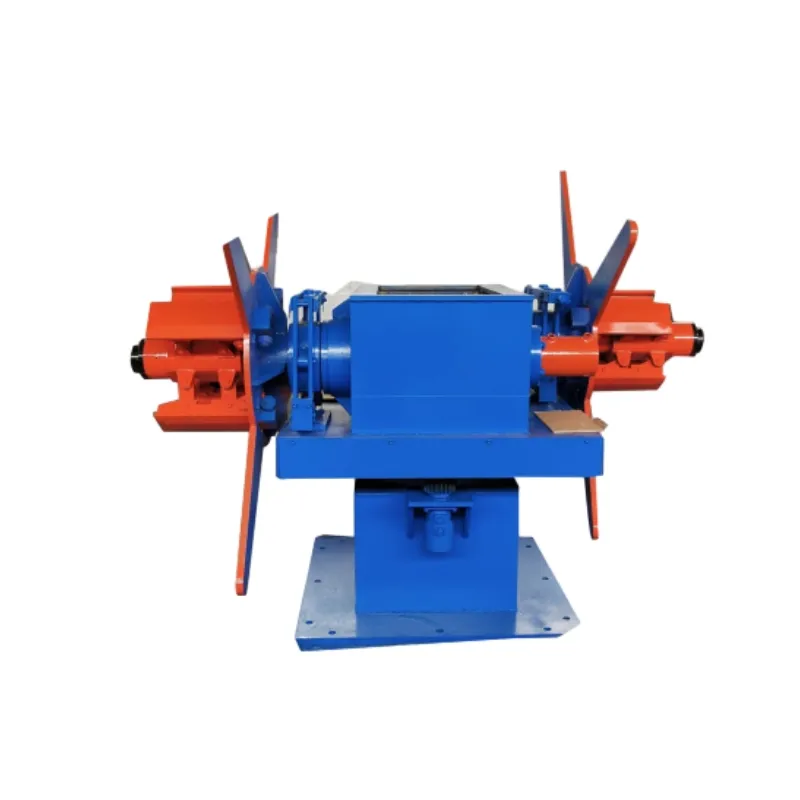roll form cladding
The Benefits and Applications of Roll Form Cladding
Roll form cladding has emerged as a transformative solution for various construction and architectural applications. As a process that involves shaping metal through rollers into specific profiles, roll form cladding is not only efficient but also offers a range of advantages that cater to modern building needs.
Understanding Roll Form Cladding
Roll form cladding refers to the method of creating thin metal sheets or panels that are then used to cover walls, roofs, and other structures. This technique starts with the raw metal, typically steel or aluminum, which is fed through a series of rollers that gradually shape it into the desired profile. The precision of this process allows for the creation of intricate designs and strong, durable coverings that have specific aesthetic and functional properties.
Cost Efficiency
One of the most attractive features of roll form cladding is its cost efficiency. The roll forming process requires less labor and material waste compared to traditional manufacturing methods. This efficiency translates into lower production costs, which can be particularly beneficial for large-scale projects. Additionally, the durability of roll form cladding means that it can stand the test of time, reducing the need for frequent replacements and maintenance.
Environmental Considerations
In an era where sustainability is a critical concern, roll form cladding stands out due to its environmentally friendly production process. The materials used can often be sourced responsibly, and the design flexibility allows for the integration of recycled materials. Moreover, the energy efficiency of many metal panels—especially when coated with reflective finishes—contributes to reduced energy consumption in buildings. The longevity of metal cladding also minimizes the environmental impact associated with frequent repairs or material replacements.
Design Versatility
Roll form cladding provides architects and designers with tremendous flexibility. The ability to create custom profiles means that buildings can achieve unique visual aesthetics that blend seamlessly with their surroundings. Whether it's a sleek and modern appearance or a traditional style, roll form cladding can be tailored to meet the specific needs of any project.
roll form cladding

Moreover, these panels can be finished in a variety of colors and textures, further enhancing their versatility. The ability to include perforations or other decorative features allows for both functional and aesthetic possibilities. Consequently, roll form cladding can be an integral part of a building’s overall architectural language.
Strength and Durability
The resilience of roll form cladding should not be underestimated. The process itself ensures that the panels are strong and capable of withstanding various weather conditions. With appropriate coatings, these cladding materials are also resistant to rust, corrosion, and UV damage, making them suitable for both industrial and residential applications.
Additionally, the structural properties of cladding systems provide enhanced insulation and soundproofing capabilities, contributing to overall building performance. This makes roll form cladding particularly appealing for urban environments where noise pollution and energy efficiency are pressing concerns.
Applications Across Industries
Roll form cladding is widely used across multiple industries, demonstrating its adaptability and effectiveness. In commercial construction, it is common for warehouses, offices, and retail spaces to utilize roll form cladding for both exterior and interior purposes. Its application extends to industrial settings, where durability and low maintenance needs are essential.
Residential projects also benefit from roll form cladding, as homeowners seek modern solutions that provide aesthetic appeal without sacrificing performance. Whether used in new home construction or as part of a renovation project, roll form cladding can enhance the value and attractiveness of residential architecture.
Conclusion
In summary, roll form cladding represents a significant advancement in construction and design, offering a combination of cost savings, environmental benefits, design versatility, and durability. As more builders and architects recognize the advantages of this innovative solution, it is poised to become a staple in modern architecture. Whether for commercial, industrial, or residential applications, roll form cladding provides a practical and stylish solution that meets the diverse needs of today’s construction landscape. Through its efficient processes and adaptable designs, roll form cladding truly embodies the future of building materials.
-
High Frequency Straight Seam Welded Pipe Production Line-BzZhou Xinghua Machinery Equipment Manufacturing Co., LTD.|Precision Welding, High EfficiencyNewsJul.30,2025
-
High Frequency Straight Seam Welded Pipe Production Line|BzZhou Xinghua|Precision Welding&EfficiencyNewsJul.30,2025
-
High Frequency Straight Seam Welded Pipe Production Line - BzZhou Xinghua|Precision Engineering&EfficiencyNewsJul.30,2025
-
High-Frequency Straight Seam Welded Pipe Production Line-BzZhou Xinghua Machinery Equipment Manufacturing Co., LTD.NewsJul.30,2025
-
High-Frequency Straight Seam Welded Pipe Production Line-BzZhou Xinghua Machinery Equipment Manufacturing Co., LTD.|Precision Manufacturing, High EfficiencyNewsJul.30,2025
-
High Frequency Straight Seam Welded Pipe Production Line-BzZhou Xinghua Machinery Equipment Manufacturing Co., LTD.|Precision Steel Pipe Manufacturing&Industrial EfficiencyNewsJul.29,2025


